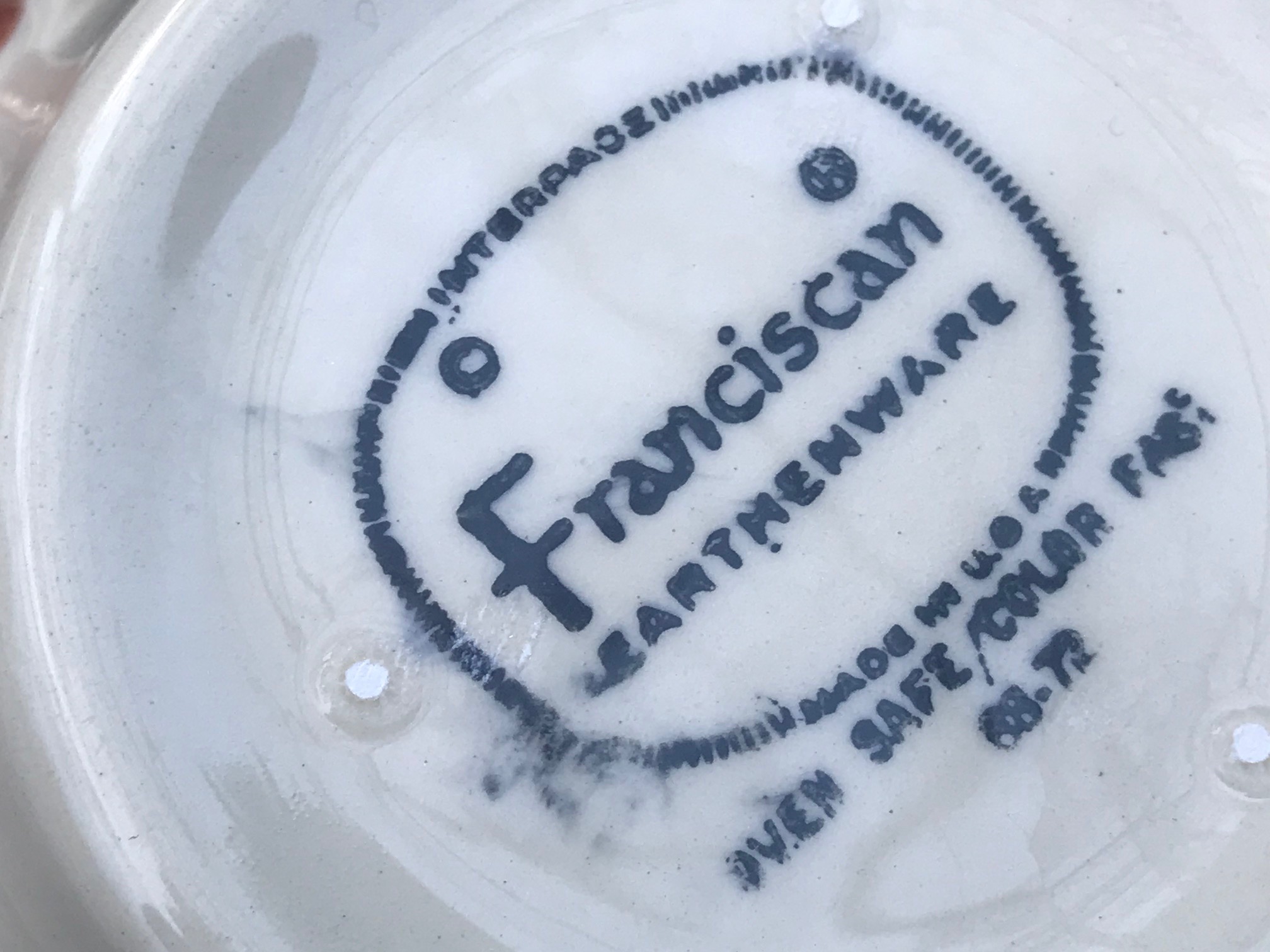Vintage (c. 1950s) Franciscan Apple Earthenware Sugar Bowl: 161,200 ppm Lead. These pieces are *NOT* safe for food use.
When tested with an XRF instrument, this Franciscan Apple vintage Franciscan Earthenware sugar bowl (c. 1950s) was positive for 161,200 ppm Lead. That’s more than 16% Lead in the surface glaze on this piece.
Here’s a link to a set of this china on Amazon* (as an example): https://amzn.to/2RwwLrx
Here’s the full XRF reading for this piece:
- Lead (Pb): 161,200 +/- 7,900 ppm
- Barium (Ba): 476 +/- 180 ppm
- Zinc (Zn): 16,09 +/- 146 ppm
Metals not listed above were not detected with the XRF instrument.
Of interest: The reading above is the Lead level on the clear finish over the cream colored base ceramic that makes up most of the piece. When I tested the red of the apple, the brown of the branches and the green of the leaves the Lead level was lower (in the 80,000 to 110,000 ppm Lead range.) This means the decorative elements are likely painted with lead-free glazes and the lead level on those areas comes in lower because it is reading the through at least one of layer of Lead-free glaze. I was also surprised that both the brown and red colors are negative for Cadmium (when typically those colors are positive for high levels of Cadmium).
Continue reading below image.
Image below is of the bottom mark on this piece.
Franciscan Apple pieces (from all years) usually also test positive with a reactive agent swab test.
Modern/newly manufactured (2019) items intended for use by children are required by current legislation to be under 90 ppm Lead in the glaze, paint or coating and under 100 ppm Lead in the substrate. Newly manufactured dishes are not regulated in the same way children’s items are (unless they are dishes intended for use by children, like newly manufactured baby dishes) for total lead content (as detectable with an XRF instrument) Vintage dishes are also not regulated for the presence toxicants in any way.
Here’s a video where I test some pieces with a LeadCheck swab, including a Franciscan piece.
The reason this vintage Franciscan Apple china is scary for me is because I have personally seen it in so many homes! Thousands of people seem to have held onto these Franciscan Apple pieces and cherished them (because it was Grandma’s) and it is also highly collectible and plentiful (check out eBay!) and people are also using it as their every day dishes (eating off of it – not just collecting it.)
Please avoid any vintage china patterns from the Franciscan Potteries of Sonoma, CA, they are all very high lead and the Lead is leachable on the surface of these particular dishes.
Click here to see more of the Franciscan pieces I have tested.
It just takes a microscopic amount of lead to poison a child – and eating off these plates could very likely do the job! They are very high lead and it is chalking off the surface into the food.
Click here to see some lead-free dishware options!
As always, thank you for reading and for sharing my posts.
Please let me know if you have any questions.
Tamara Rubin
Lead Safe Mama
Amazon links are affiliate links. If you purchase something after clicking one of my affiliate links I may receive a small percentage of what you spend at no extra cost to you. Thank you so much for supporting my advocacy work in this way! If I link to a leaded item on Amazon it is not because I recommend you buy it, but the opposite – so you can see it “in the wild” and know what to avoid!
Never Miss an Important Article Again!
Join our Email List










How does a person get rid of the franciscan dishes? i.e., not a thrift store or E-Bay.
In the garbage?
Garbage is best – make sure to smash them. Here’s my advice on that:
https://tamararubin.com/2019/12/what-should-i-do-with-my-lead-contaminated-dishes-to-toss-or-not-to-toss/
T